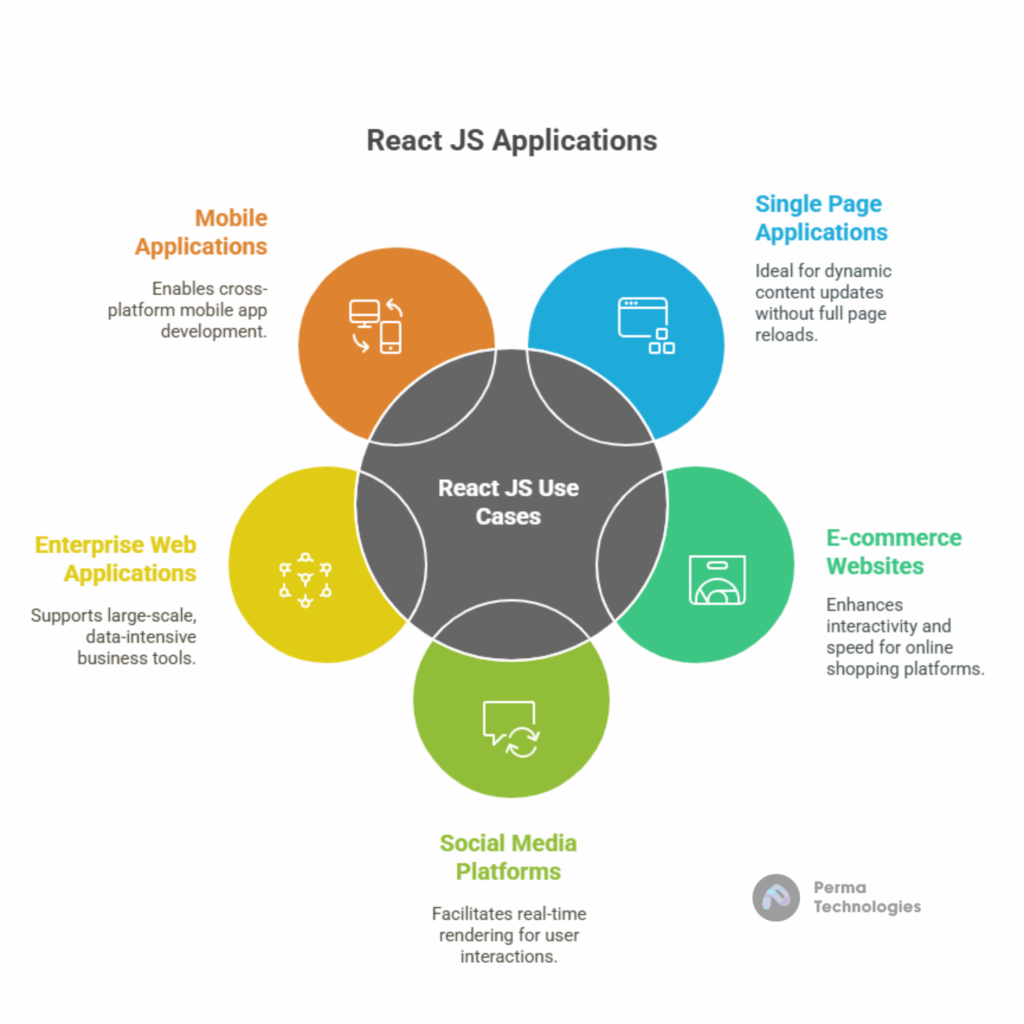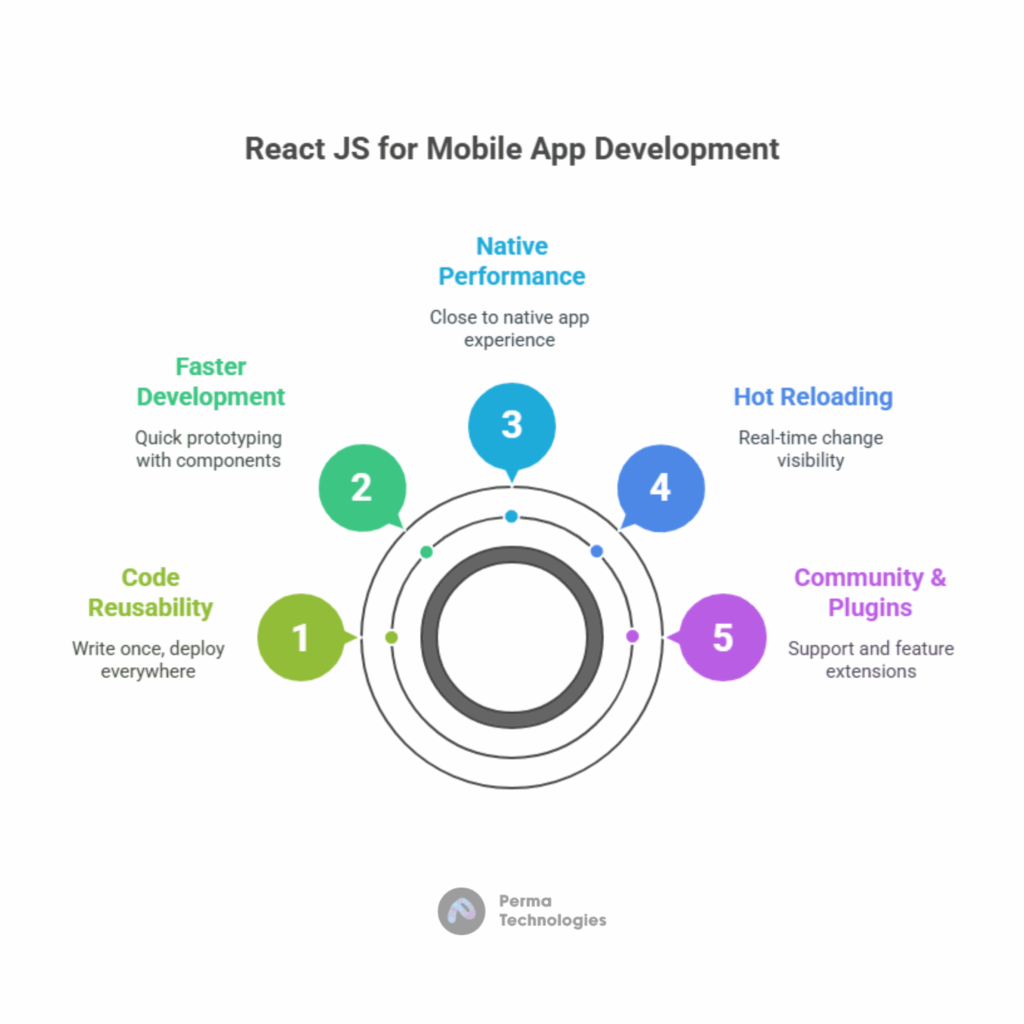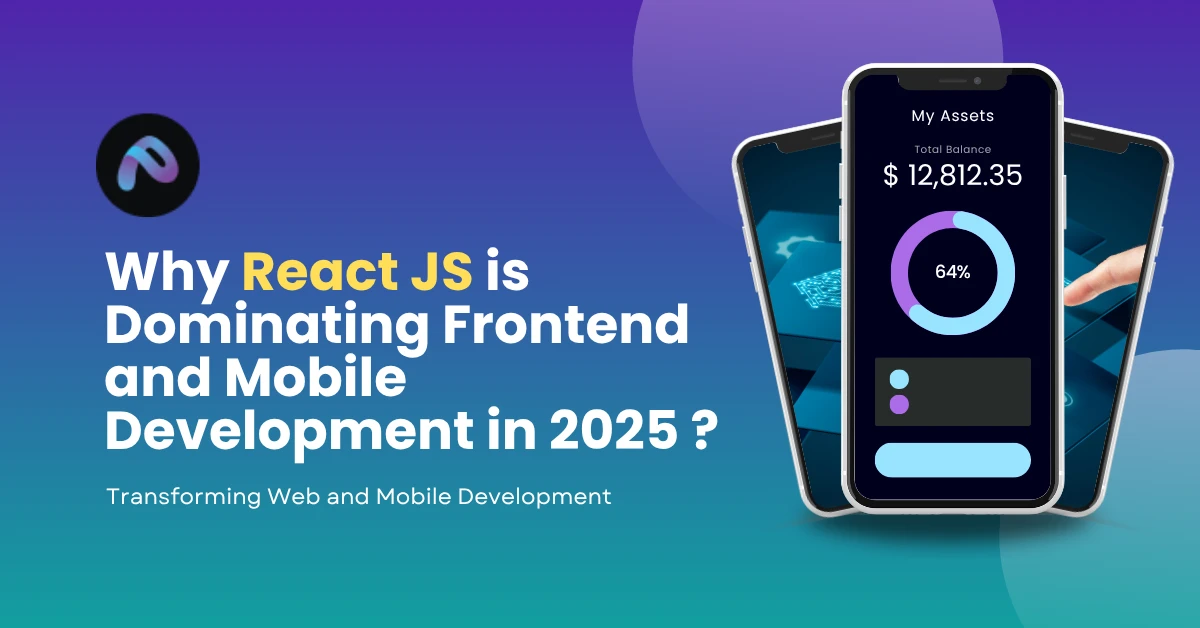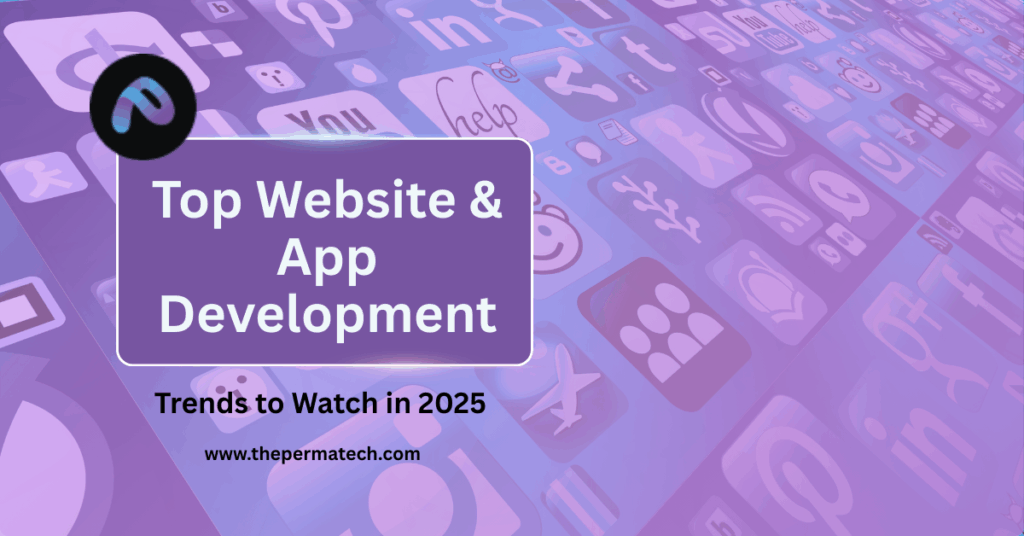In the rapidly evolving world of software development, choosing the right front end framework is critical for creating modern, scalable, and maintainable applications. In 2025, React JS continues to dominate both web and mobile development, becoming the go-to solution for developers, startups, and enterprises alike.
But why has React JS maintained its leadership position in such a competitive landscape? Let’s explore the key reasons behind React’s enduring success in 2025 and why it remains the preferred choice for frontend and mobile development.
What is React JS?
React.js, commonly referred to as React, is a JavaScript library for building user interfaces. Created by Facebook in 2013, it has since become one of the most popular tools for frontend development.
React enables developers to build interactive UIs efficiently using components modular, reusable pieces of code. These components manage their own state and can be composed to create complex user interfaces.
As per Statista 2025, React is the most widely used web framework among developers, with over 42% of developers worldwide preferring it over alternatives like Angular, Vue.js, or Svelte. This is consistent with its growth from 40.6% in 2024, showing a rising trend in adoption due to its flexibility and performance.
Use Cases of React JS
React is versatile and can be applied in numerous contexts across web and mobile. Here are some popular use cases:
Single Page Applications (SPAs)
React is ideal for SPAs, where the content dynamically updates without needing a full page reload. Examples include dashboards, email clients, and admin panels.
E-commerce Websites
For fast loading product pages, dynamic filtering and cart functionalities, React provides high interactivity. Popular e commerce platforms like Shopify use React extensively.
Social Media Platforms
React’s real time rendering capabilities make it perfect for news feeds, comments, and user interactions on platforms like Facebook, Instagram, and Twitter.
Enterprise Web Applications
Large scale, data intensive tools like CRM and ERP systems benefit from React’s component based architecture.
Mobile Applications
Using React Native, developers can build mobile apps for iOS and Android using the same React principles and codebase.

Key Benefits of React JS for Front End Development
React offers several benefits that make it a go to choice for frontend developers:
Component Based Architecture
React promotes the reusability of components, making code easier to maintain, test, and scale.
Virtual DOM
React uses a Virtual DOM to optimize updates. Instead of re rendering the entire UI, it updates only the parts that changed, improving performance dramatically.
Declarative Syntax
With React, you describe what the UI should look like for any given state, and React takes care of updating the UI when the state changes.
Unidirectional Data Flow
React maintains a predictable state flow, making debugging and reasoning about app behavior easier.
Rich Ecosystem
React has a huge ecosystem, with packages like Redux, React Router and libraries for forms, state management, and testing.
SEO Friendly
Using server side rendering (via Next.js), React apps can be optimized for search engines, improving discoverability and performance.
Backed by Facebook
React’s ongoing development is supported by Meta (formerly Facebook), ensuring stability, continuous updates, and strong community support.
Why Should You Use React JS for Mobile App Development
Although React is primarily a web library, it extends beautifully to mobile app development through React Native.
Code Reusability
With React Native, you write code once in JavaScript/React and deploy it to both iOS and Android, significantly reducing development time and cost.
Faster Development
React Native’s pre built components and libraries allow for faster prototyping and MVP development.
Native Performance
Unlike hybrid frameworks that run in a webview, React Native uses native components, providing close to native performance.
Hot Reloading
React Native offers hot reloading, allowing developers to see changes in real time without recompiling the entire app.
Large Developer Community
Since both React and React Native share a JavaScript foundation, the learning curve is minimal for React developers moving into mobile app development.
Third Party Plugin Support
Need a calendar, maps, or camera access? React Native supports third party plugins that extend native features easily.

Examples of Companies Using React.js for Apps
Many of the world’s top companies use React and React Native for their apps. Here are some notable examples:
Facebook : As the original creator of React, Facebook uses it extensively in its web and mobile apps (built with React Native).
Instagram : Instagram’s web interface is built with React, and its mobile features were incrementally rewritten using React Native.
Airbnb : React and React Native power the Airbnb platform to deliver dynamic UIs and cross platform mobile experiences.
Netflix : Netflix uses React on its front end layer to provide fast, efficient and scalable streaming interfaces.
WhatsApp Web : WhatsApp Web relies on React for a real time messaging experience that mimics its mobile app.
Uber : Uber uses React for dashboard and dispatch interfaces due to its performance and flexibility.
Key Features of React JS for Developing Robust Mobile Apps
When building robust mobile apps, React (via React Native) offers the following features:
Modular Architecture
Apps can be structured in modular components, allowing teams to work on different features independently.
Cross Platform Development
One codebase can serve both Android and iOS with minimal platform specific customization.
Third Party Integrations
React Native supports easy integration of SDKs, APIs and native modules, enabling rich functionality.
Live & Hot Reloading
Speeds up development by instantly reflecting changes without restarting the app.
Community Packages
From UI libraries like React Native Elements to state management tools like MobX or Redux, developers have a wide range of tools at their disposal.
Easy Debugging Tools
React Native includes powerful developer tools for debugging mobile interfaces and inspecting elements in real time.
Custom Native Module Support
When needed, developers can write platform specific code or extend functionality via custom native modules in Objective C, Swift, or Java.
Component Based Architecture Promotes Reusability
React’s component based architecture is a key factor in its dominance. It encourages developers to break down UIs into isolated, reusable pieces, leading to:
- Faster development cycles
- Reduced code duplication
- Easier maintenance and scalability
In large teams, this modular approach means developers can work on individual components without affecting the entire system. This aligns perfectly with modern DevOps practices and micro frontend strategies.
React Native: Bridging Web and Mobile Seamlessly
React’s influence extends beyond the browser React Native, introduced in 2015, continues to thrive in 2025 as a top framework for cross platform mobile app development.
Why React Native Still Wins in 2025:
- Single codebase for iOS and Android
- Native performance with a web development mindset
- Strong community support and open source libraries
- Fast refresh for real time previewing
React Native allows companies to reuse up to 90% of their code across platforms, making mobile development faster and more cost effective.
Rich Ecosystem and Tooling
React’s ecosystem has exploded with tools and libraries that simplify everything from routing and state management to testing and deployment.
Top Libraries That Enhance React in 2025:
- Next.js : For server side rendering (SSR), static site generation (SSG), and hybrid apps
- Redux Toolkit & Zustand : For state management
- React Query / TanStack Query : For efficient data fetching and caching
- Framer Motion : For smooth animations
- React Hook Form : For form handling and validation
Whether you’re building an e commerce site, SaaS dashboard, or mobile app, React has a plug and play solution available.
Performance Optimizations Are Built In
React in 2025 is faster than ever. Thanks to Concurrent Rendering, Suspense and Automatic Batching, performance bottlenecks are minimized even in data heavy applications.
React’s virtual DOM and fine grained rendering control allow developers to update only the parts of the page that changed, resulting in smoother UX and faster page loads.
Strong Backing from Meta (Facebook)
Unlike many open source projects that lose momentum, React continues to thrive because it is actively maintained by Meta. The React team at Meta ensures:
- Regular updates
- Clear documentation
- Transparent roadmap
- Collaboration with the developer community
This level of support ensures React remains secure, stable, and future proof.
Developer Experience and Popularity
React is beloved by developers. According to the Stack Overflow Developer Survey 2025, React ranks:
- #1 in most loved frameworks
- #1 in job opportunities for frontend developers
- #1 in GitHub stars among JavaScript frameworks
Why Developers Love React:
- JSX makes UI intuitive and declarative
- Powerful debugging with React DevTools
- Strong typing support with TypeScript
- Abundant learning resources and tutorials
React developers are among the most sought after in the job market, with competitive salaries and high demand across industries.
Versatility: From Static Sites to Complex Apps
React is not just for SPAs (Single Page Applications). With frameworks like Next.js, developers now build:
- SEO optimized static sites (Jamstack)
- Real time dashboards with server rendering
- Progressive Web Apps (PWAs)
- Hybrid desktop apps with Electron + React
This versatility gives React an edge in diverse use cases whether you’re building a blog, an admin panel, or a real time trading platform.
Scalability for Enterprise Applications
React is enterprise ready. Large organizations use React to build and maintain complex systems with hundreds of components and developers.
Enterprise Benefits in 2025:
- Long term maintainability with monorepos
- Code splitting and lazy loading for speed
- Integration with micro frontends and containerization
- Support for A/B testing, analytics, and accessibility (WCAG)
Tech leaders like Amazon, Netflix, Shopify, and Microsoft continue to rely on React for internal tools and consumer facing platforms.
Future Ready with AI and Cloud Integration
In 2025, React seamlessly integrates with AI/ML powered interfaces, cloud services, and real time databases like Firebase, Supabase and AWS AppSync.
React based apps are now:
- Integrated with voice assistants and LLMs
- Synced with cloud APIs via GraphQL
- Optimized for edge rendering and CDNs (e.g., Vercel, Cloudflare)
This alignment with modern backend and AI tooling ensures React remains future ready.
Conclusion: React Is Not Just a Trend,It’s the Foundation
React JS has matured into a cornerstone of modern application development. Whether you’re building a simple website, a mobile app, or an enterprise platform, React offers the performance, flexibility and ecosystem to get the job done efficiently.As we look ahead, React continues to evolve with the web itself, staying at the forefront of innovation. For developers and businesses investing in React in 2025, the ROI is clear: speed, scalability, talent availability, and long term viability.




